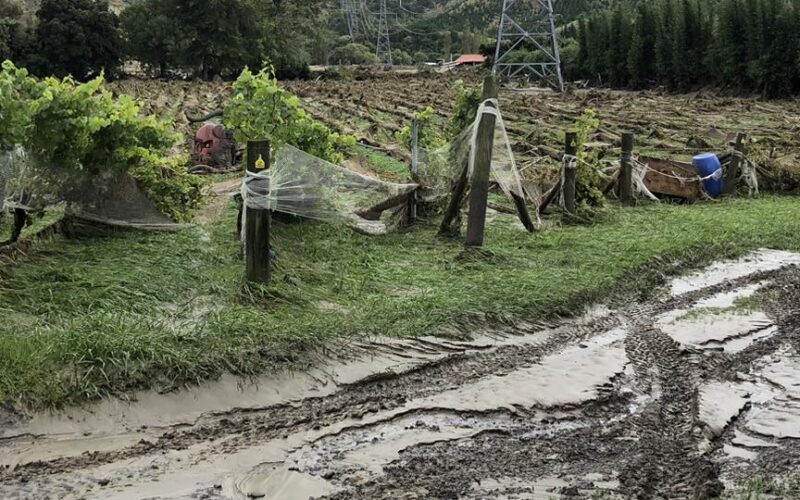The Hawke’s Bay horticulture sector needs up to $960 million of targeted government funding or it won’t fully recover from the massive blow dealt by Cyclone Gabrielle.
That’s according to a Boston Consultancy Group (BCG) report released to an industry roundtable chaired by Horticulture New Zealand.
There is a need for a targeted funding intervention package that is “precise and surgical in its nature and intent”, said BCG New Zealand managing partner Phillip Benedetti.
“In our view, strong commitment from government, underpinned by a clear plan that responds to the complexity of the situation, will be more productive than intermittent, as-needed funding,” he said.
Cyclone Gabrielle is understood to have affected approximately 35% of local crop production value and the negative economic impact on the horticulture industry is estimated to be over $1.4 billion in 2023, BCG said.
The cyclone tore through much of the upper North Island in February, causing much damage on the east coast.
The Hawke’s Bay region contributes about $1.2bn annually to the economy and directly employs about 6,700 people.
Following the cyclone, the government appointed a team of ministers – led by finance minister Grant Robertson – to lead its response.
Hawke’s Bay is already on its third minister in charge of the region’s recovery following the sacking of Stuart Nash and the defection of Meka Whaitiri.
Kieran McAnulty now has the portfolio in an acting capacity.
Robertson has previously signalled that the cyclone has caused much of this month’s budget to be rewritten and he is expected to make a pre-budget announcement regarding the cyclone soon.
According to the BCG report, the $1.4bn economic impact includes some $370m in critical response costs to remove silt, slash and other debris from farms, vineyards and orchards and to evacuate contaminated crops that pose health risks.
It also estimates $500m in direct economic losses to the industry, reducing the economic value of the Hawke’s Bay horticulture industry to $0.9bn in 2023.
The situation is compounded as the sector was already in a “highly fragile state” following two challenging growing seasons in 2022 and 2023 with unseasonably high rainfalls.
It has also faced two to three years of tough economic conditions, including increased export costs, limited labour availability, more erratic weather and reduced demand for apples from Europe as restrictions on the sale of the fruit into Russia created a saturated supply in Europe from local growers.
BCG also warned of socio-economic impacts such as reduced regional development and stagnant innovation.
Critically, however, it said that without recovery support, the sector is not expected to fully rebuild.
As a base case, it will suffer from $3.5bn in cumulative losses over 2024-2030 as land is not replanted or is put to lower-value uses such as cropping or sheep farming, with lower capital outlay and investment into the sector reduces.
Losses may be higher if the sector recovery rate is below base case assumptions.
The industry may lose up to $610m per year against pre-cyclone forward projections along with a slowdown in the industry growth rate.
However, with targeted support from private and public sector stakeholders, there is an opportunity to support the sector to “grow back better” – restoring and protecting industry participants in the short term, and creating a higher value, more resilient and innovative sector in the medium long term, BCG said.
The plan aims to achieve a target-state aspiration that would enable the sector to grow around 20% above pre-cyclone 2030 forecasts, based on economic value.
This growth may lead towards a projected Hawke’s Bay horticulture industry worth $2.5bn in 2030.
The “Grow Back Better” plan will require funding from multiple sources, BCG said. Government funding, however, will be key.
To pull it off, growers in the sector require around $650-$960m of government funding support to address the constraints on recovery and maintain downstream volume capacity and in-market demand.
Those funds would include $230m to $340m in government support for critical response activities. These include immediate clean-up programmes as well as schemes to ensure production reinstatement, including employment sustainability.
Some $420m to $620m in government support for short-term re-establishment activities, including a replanting programme incentivising optimal land use, including higher value crops where appropriate, urgent clarity on land and water-use changes, as well as short-term risk-mitigation schemes.
To do that, it suggested a government subsidy programme similar to the Agricultural Recovery Programme offered following the 2004 Manawatū floods.
It also said that long-term resilience activities for infrastructure, innovation and disaster planning may deliver $600m to $1bn in cumulative value in 2024–2030.
“Assuming constraints are addressed (and long-term investments are made for resilience activities), the plan could add $2.4bn–$3.6bn cumulatively above base case between 2024–2030,” BCG said.
It said the total cost for all Hawke’s Bay infrastructure was estimated at more than $13bn.
The report said following the 2011 Queensland floods, caused by Cyclone Yasi, the Australian government invested in rapidly improving disaster resilience and infrastructure.
Close to A$7bn ($7.5bn) was invested by the end of the year on 96% of affected roads – nearly 9,000km – and 92% of affected railways – nearly 4,500km – were rebuilt.
In a statement, Robertson said he had seen a broad outline of the report. Officials will review it and report back to ministers.
They are looking right now at various sectors that have been affected by the cyclone and what support they can provide, as well as their long-term recovery.
“I have said all along that the rebuild will need to be a partnership involving central and local government, businesses and their banks and insurers,” he said.
“It is also worth noting that we have already made a significant amount of funding available to support response and recovery including to those in the horticulture sector.”






